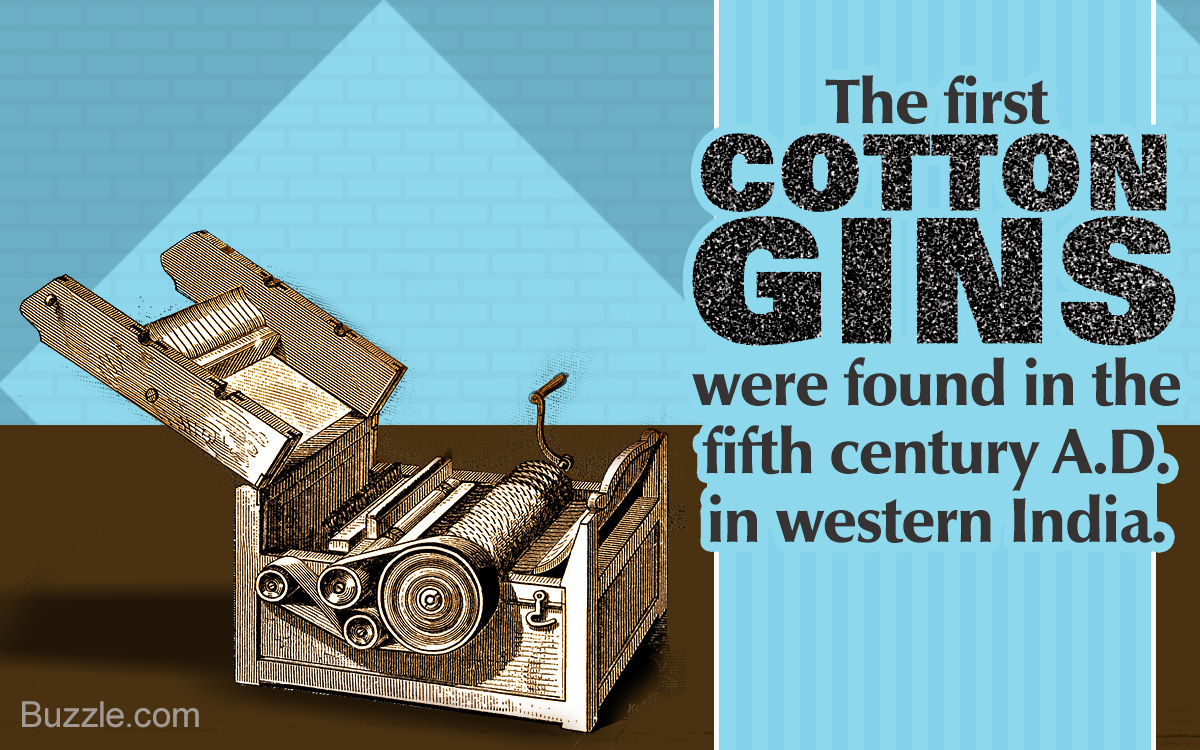
One of the two earliest machines that revised human history — the cotton gin, alongside the spinning jenny, ushered in the Industrial Revolution. The machine was simple in operation, but triggered the first automated production of cotton yarn, which was much faster than the extensive human intervention required earlier.
The cotton gin or ‘cotton engine’ is a machine that was designed by Eli Whitney, an American inventor, in 1793. This was a time in history when accelerated colonization had routed tons of cotton and other raw material to Europe, especially England. The adage Necessity is the Mother of Invention ruled large and led to the invention of the cotton gin. The accumulation of perishable raw cotton and the manual separation of the seeds from the fiber put the shipments at risk. Its invention brought respite to the owners of the newly initiated cotton factories and kick-started the Industrial Revolution.
The gin was not the first machine though. Primitive versions were used as far back as the first century AD. They comprised single iron or wooden rollers and flattened wood blocks or even flat chips of stone. Primitive gins were used in Asia, Africa, and North America, and written records of the same were maintained during the fifth century AD. The narrow roller gently squeezed out the seeds from the cotton pods. Many roller versions were also used during the sixteenth century, driven by water power. However, the new look and design by Eli Whitney, totally mechanized the cotton-cleaning process.
Eli Whitney was born in 1765, in Massachusetts. A graduate from Yale College, his 1794 patent made Whitney a hero and a mandatory mention in every history textbook. The cotton gin addressed the need for increased growth in cotton fiber production. It reduced labor that was essential to the process of cleaning and separating the cotton fiber from the seeds. This in return manifested in profits out of wholesale cotton prices, bulk and quick manufacture, coupled with increased markets.
Working of the Original Design

The design was not elaborate and did not address any complex aspects of cotton cleaning. This simple design only separated the cotton fiber from the seeds quicker than it was done by hand and made the cleaned fiber available to fabric-manufacturing units across Europe.
- The design comprised a wire screen, with numerous, small hooks made from wire. The hooks served the purpose of pulling the cotton into the machine, while the integrated brushes quickly cleared the loose lint.
- Cotton lints are cleaned within a wooden cylinder. The cylinder has rows of spikes that form a grid and function like a comb.
- When the open cotton pods pass through the bars of the grid, the close-knit design does not allow the seeds to pass through.
- The cleaned cotton fibers, minus the seeds, are then extracted through the wire teeth of the grid-like comb and sorted in a pan on the other side.
Working of the Modern Design
- In the advanced design of a cotton gin, cotton arrives at the gin in what is termed trailers or compressed modules.
- The cotton that arrives in the trailer, is absorbed in the gin courtesy of a tube. However, with the influx of compressed modules, the manual process has become completely automated.
- As the cotton is shipped in modules, the feeder segments the modules, being sufficiently equipped with spiked rollers. The spiked rollers teeth out any foreign matter present in the cotton module.
- Following the extraction process, the cotton passes through a drying process, which rids the material of excess moisture.
- The large clumps of dried cotton are loosened with cylinder cleaners armed with spiked cylinders. Next, the cotton passes through the rods or screens for removal of soil or any form of grim.
- The cotton is then treated through a stick machine, which sucks out any sticks or burrs, while the cotton stays pat in the rotating cylinders.
- The cotton gin stand pulls out the seeds from the cotton, due to their size not being appropriate to pass through the ginning ribs.
- The seeds collected, are removed from the gin and sent to an oil mill to be reused. The seeds are re-planted or further processed into cottonseed oil.
- The cotton passes through another round of treatment through the grid bars, for any left-over foreign material must not be spotted in the cleaned cotton.
- The cotton is compressed with the help of a bale press, and is made ready for shipping.
The cotton gin was not used for profit without fueling another development. The downside was the increase in slavery. The quicker processing of cotton shipped in from various colonies in and around South-East and Central Asia, ushered in the need for additional and close-at-hand cotton farming. The cotton fields demanded extensive labor that could only be forced at the time, making conditions even more unbearable for the enslaved. Labor was also needed for the transportation of the raw and processed cotton between the unit that manufactured fabric and retail outlets. Thus, slavery became part of the trade.


